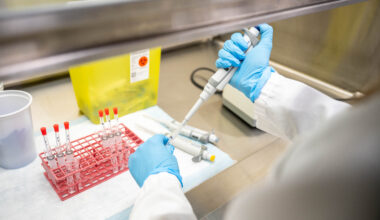Wearable brain devices are now being marketed directly to consumers and often claim to deliver benefits like boosting memory and modulating symptoms of depression. Although the industry is quickly growing, little is known about the validity of these claims and the related ethical consequences or repercussions.
In a perspective published today in Neuron, a team of neuroethicists looked at the range of products being sold online and questioned the claims made by companies about these products. They identified 41 devices for sale, including 22 recording devices and 19 stimulating devices. The goal of the project was to look at issues of transparency, rights and responsibility in the way these products are marketed and sold.
“When it comes to biotechnology, and in particular brain technology, there is a heightened level of responsibility around ethical innovation,” said senior author Dr. Judy Illes, a professor of neurology and the Canada Research Chair in neuroethics in the University of British Columbia’s faculty of medicine. “The great news is that it doesn’t cost a lot of money to innovate ethically—it just takes some more thought, good messaging and consideration of potential consequences. It’s worth it for companies to take the time to do it right.”
Companies that make wearable brain devices claim that the products can reduce stress, improve sleep, improve cognition, and can even help patients with conditions that affect behaviour and attention, as well as certain neurodegenerative diseases.
Despite wide-ranging claims, however, there have been few studies evaluating the scientific validity of any of them. The authors didn’t seek to evaluate the products’ effectiveness in this review. Instead, they looked at how manufacturers could communicate the potential outcomes from using these devices—both positive and negative—in a more ethically responsible way.
The neuroscience wearables market has parallels to other direct-to-consumer medical products. This includes herbs and supplements, home genetic testing kits, so-called wellness CT scans, and “keepsake” 3D ultrasounds offered to pregnant women. By marketing them for wellness or recreation rather than health, companies that sell these products and services are able to avoid regulatory oversight from agencies such as the U.S. Food and Drug Administration.
“Our team has concerns, however, that people could turn to these devices rather than seeking medical help when they might actually need it,” said Dr. Illes. “They may also choose these devices over conventional medical treatments that they have been offered. There are a lot of potential effects that we don’t know much about.”
Symptoms and side effects that could result from use of these products include redness or other irritation where the devices contact the skin, headaches, pain, tingling and nausea. Some of the products mention the possibility of side effects in their packaging, but there haven’t been any studies looking at how common or serious the effects may be.
The researchers note that warning labels advising consumers about risk are largely lacking. “I would consider this an important, responsible message to consumers. Few of these products have it,” Dr. Illes said.
Dr. Illes and her team believe that because some of these products are marketed for children, who may be particularly vulnerable to their effects on the brain, extra caution is needed.
“Their bodies and brains are still developing,” she said. “What are the claims for these products and how do we manage and appreciate them both for their potential benefits and possible risks?”
Additional caution may also be needed for use of neuroscience wearables in elderly people, another population that may have a higher risk of potential harm.
There are also issues related to neuroscience wearable products that record brain activity.
“How are these data used and who has access to them?” Dr. Illes said. “These are things we don’t know. We should be asking these questions.”
The research was supported by Technical Safety BC, an independent, self-funded organization mandated to oversee the safe installation and operation of technical systems and equipment.


